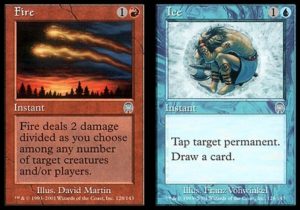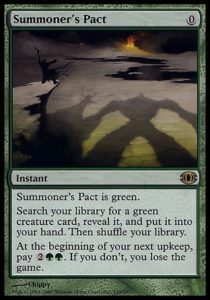Last week, we considered Unstable and the purpose of Un-sets in general. The same day, LivesSideways wrote on Reddit about how many things Un-sets gave Magic which we take for granted, which led to a spirited discussion and a feature on Daily MTG.
This week, let’s consider all the good that Un-sets have done and ask the un-answerable question: would these innovations have happened without Unglued and Unhinged?
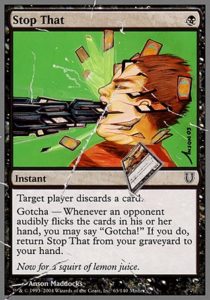
Double Plus Un-Good
The following is a (partial) list of major un-novations first seen in Unglued or Unhinged which have gone on to become part of Magic:
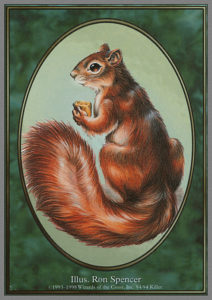
Tokens
Unglued gave Magic its first real tokens. Before then, coins and face-down cards were the most official option players had to work with. Tokens have proven to not only be a fun and desirable collectible, they also have enabled mechanics likely too cumbersome to exist (such as Emblam and Eternalize), given rise to popular Planeswalker emblems, and help keep down the complexity of mechanics like Morph and Manifest. They created a precedent of having non-Magic cards in boosters with rules relevance, leading to the checklist cards of Innistrad and perhaps even the Timeshifted cards of Time Spiral block.
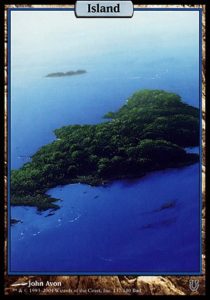
Full Art Lands & Nonstandard Card Borders
One of the hottest commodities this side of Guru lands are full art Unhinged lands. Unglued demonstrated that card borders didn’t all need to be uniform, creating some of Magic’s most beautiful lands. Full art lands are one of Magic’s most popular innovations and have been since their creation.
Un-sets pushed the limits of card borders in other ways, too. Cards like Burning Cinder Fury of Crimson Chaos Fire, I’m Rubber, You’re Glue, B.F.M. (Big Furry Monster), Mouth to Mouth, Spark Fiend, and Mesa Chicken broke conventions in other ways. They gave rise to the full vertical artwork & border-breaking of almost every Planeswalker card, as well as the Eldrazi. They set the precedent for the alternate card borders of miracles, devoid, and colored artifacts.
Split cards
Unglued 2 (which was never released) created the basis for split cards, one of the most flexible and enduring mechanics of Magic. It’s said that almost every mechanic can be reduced to a split card or kicker, and Unglued 2 codified it first. We’ve seen split cards time and time again, from the originals in Invasion block, to Fuse in Dragon’s Maze, to Aftermath in Amonkhet. They’re another popular and enduring innovation dating back to an Un-set.
More Limited Inspirations
Un-sets have had inspired more cards and mechanics than I can count. Rocket Powered Turbo Slug laid the groundwork for the Pacts of Future Sight. Infernal Spawn of Evil forecast Forecast. B.F.M. made Meld possible. AWOL underscored the nonsensical nature of being removed from the game and potentially led to the creation of the exile zone. _____ was the first flexible name card, which led to Spy Kit. Barren Glory and Timmy, Power Gamer straight-up became Magic cards.
So, in summary, we owe a whole lot of ideas to Un-sets. They were fertile grounds for experimentation which has bore fruit in the near, middle, and long term.
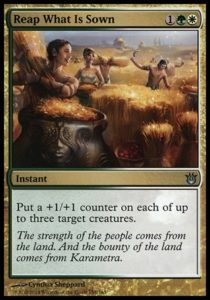
Does it justify the cost?
There is no arguing that Magic owes a lot to Unglued and Unhinged. It’s exceedingly likely that discoveries made in Unstable have already paid dividends in future Magic products.
Un-sets exist so that designers like Mark Rosewater can crack their knuckles and conceive the currently inconceivable. The products are humorous, off-beat, and casual-focused products which lay a foundation for years and years of future designs. The previous pair of sentences have several assumptions based on everything I’ve read about Un-sets, and if you don’t agree with them, well, you’re unlikely to agree with what I’m about to say.
It’s rare for game designers to have the luxury of experimenting for the sake of experimenting in a published product. Oh, plenty of games arise because someone experimented, discovered something cool, and fleshed it out into a game, or went out on a limb with a crazy idea and made something wondrous—they discovered something and made their game. On the other end of the spectrum, plenty of studios have designated time for designers to experiment with wild ideas or work on personal projects, some of which may become published products. However, it’s atypical for designers to be given carte blanche to experiment with a product intended for sale, for the express purpose of experimentation—moreover, that this product is marketed to its typical audience but is atypically playable.
I don’t hate the concept of an Un-set. But if the argument for Un-sets’ necessity hinges upon designers getting to experiment, then I don’t buy it. Why does designer experimentation require commissioning hundreds of original art assets, replacing a supplemental marketed to a larger audience (and likely to make more money), and the time of proofreading, legal, playtesting, and creative? Designers can experiment without needing to produce a finished, polished product at the end and without taking up so many resources from other teams.
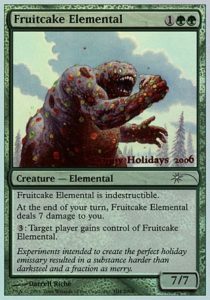
Have your Un-cake and eat it too
Un-sets are something I’d love to be wrong about. I hope that Unstable sells like hotcakes, revolutionizes design, and is so fun and entertaining that it expands the Un-audience dramatically. I hope that it is an enduring triumph of design that I am incensed to spend too much money on. I’m skeptical that that’ll be the case, but I’m ready to be wrong. Either way, it doesn’t matter too much—either I’m right and the product isn’t for me (and possibly doesn’t have a large enough audience to justify itself), or I’m wrong and I get something new and fun to play with. Only time will un-tell.
And, as always, thanks for reading.
—Zachary Barash
Zachary Barash is a New York City-based game designer. He works for Kingdom Death: Monster, has an MFA in Game Design from NYU, and does freelance game design.
His favorite card of the month is Unconventional Tactics. It’s rare to see humor like this in a card not featuring goblins, but it manages to succeed on several levels. Unconventional Tactics manages to tell a silly, dark, and sad tale of mindless zombies who really want to serve jumping off a ramp. It’s a light, subtle, and poignant moment amid the dark background of Hour of Devastation. On the design side, it manages to revamp Angelic Blessing—by giving it a tiny tribal theme, it suddenly becomes a weird card advantage/aggro engine. And it does all of that without you even needing to notice.


